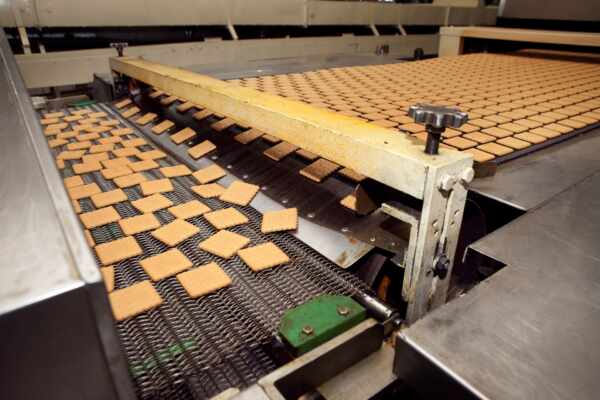In industries that rely on efficient conveyor belt systems, making the right decision when it comes to repairing or replacing these systems is of utmost importance. When faced with an underperforming or damaged conveyor belt, there is often a tough decision to be made: is it more cost-effective and efficient to repair the belt, or does it make more sense to invest in a brand-new system? The answer to this question requires careful consideration, taking into account factors such as the age of the belt, the scope of the damage, and the impact on overall operations.
In this article, we will guide you through the process of evaluating whether to repair or replace your conveyor belt system, helping you identify key considerations and make the most informed decision for your business. We will weigh the advantages and drawbacks of each option, providing insights on operational impacts, cost considerations, and potential improvements in efficiency. Armed with this knowledge, you can confidently determine the best course of action when faced with the decision to repair or replace your facility’s conveyor belt system.
By drawing on our extensive experience and expertise in conveyor belts, we aim to assist you in making the most cost-effective and beneficial choice for your business, ultimately contributing to the ongoing success and efficiency of your operations.
Assessing the Extent of Conveyor Belt Damage
Before deciding whether to repair or replace your conveyor belt system, it’s crucial to assess the extent of the damage. By understanding the nature of the issue, you can better evaluate the most effective and efficient solution. Consider the following factors when assessing the extent of the damage:
1. Severity of the Issue
Examine the belt for any visible signs of wear or damage, such as fraying, splitting, or punctures. Note whether the damage is localised to specific areas or more widespread throughout the system.
2. Root Cause
Determine the root cause of the damage, whether it’s due to mechanical issues, improper maintenance, or external factors like foreign object ingress. Understanding the underlying issue will help you decide whether a repair is sufficient or if a replacement is necessary to prevent recurring problems.
3. Impact on Operations
Consider the impact of the conveyor belt’s damage on your facility’s operations and productivity. If the belt’s condition is adversely affecting your production efficiency, it might be time to invest in a replacement.
Cost-Effectiveness of Repairing vs. Replacing Conveyor Belts
The cost implications of repairing or replacing your conveyor belt system are a key factor in making the right decision for your business. It is essential to assess these financial implications in the short and long term to ensure the best outcome:
1. Immediate Costs
Compare the cost of repairing your conveyor belt to that of purchasing a new system. While repairs might seem more cost-effective in the short term, factor in any downtime and the risk of further damage.
2. Long-term Costs
Assess the long-term cost implications of your decision, including maintenance and the potential need for future repairs or replacements. Replacing your belt might have a higher upfront cost, but it could prove more economical if it reduces the risk of ongoing issues and extends the system’s lifespan.
3. Return on Investment (ROI)
Consider the return on investment you could achieve by repairing or replacing your conveyor belt system. A new system may offer improved efficiency, resulting in higher productivity and lower operational costs over time.
Potential Improvements in Efficiency
One of the primary benefits of replacing your conveyor belt system is the potential for significant improvements in efficiency. When making your decision, evaluate the following:
1. Upgrade Opportunities
A new conveyor belt system can provide the opportunity to upgrade to more advanced technology, improving efficiency and performance. Consider whether a new belt system offers advantages such as increased load capacity or better energy efficiency.
2. Minimised Downtime
Replacing a worn or damaged belt can reduce downtime associated with ongoing maintenance and repairs, allowing your facility to operate more efficiently and consistently.
3. Enhanced Reliability
Investing in a new conveyor belt system can enhance the overall reliability of your production process, reducing the risk of unexpected breakdowns and ensuring smoother operations.
The Importance of Proper Maintenance
Regardless of whether you decide to repair or replace your conveyor belt system, the importance of proper maintenance cannot be overstated. Establishing a regular maintenance schedule and adhering to best practices will help prolong the lifespan of your belt system and maximise efficiency:
1. Regular Belt Inspections
Carry out regular belt inspections, checking for visible signs of wear or damage, and proactively addressing any issues to avoid costly downtime.
2. Keep Components Clean and Lubricated
Ensure your conveyor belt system is kept clean and well lubricated. Clean belts perform more efficiently and reduce the risk of damage, while lubricating moving parts will prolong the system’s lifespan and ensure optimal performance.
3. Prompt Addressing of Issues
Quickly and effectively address any issues that arise with your conveyor belt system. Delaying necessary repairs can lead to more significant problems down the track, resulting in additional costs and loss of productivity.
Conclusion
Deciding whether to repair or replace your conveyor belt system requires a thorough evaluation of the extent of damage, cost implications, and potential improvements in efficiency. By considering these factors, alongside the long-term impacts on your facility’s operations, you can make the most informed choice and ensure the ongoing success and efficiency of your business.
In either scenario, remember the importance of proper maintenance in maintaining the performance and extending the lifespan of your conveyor belt system. After all, a well-maintained system will keep your business running smoothly and efficiently for years to come.
Let our expert team guide you through the decision-making process for your conveyor belt system. Contact us today for advice tailored to your situation and benefit from our extensive experience and commitment to helping you strike the perfect balance between cost-effectiveness and operational efficiency.




